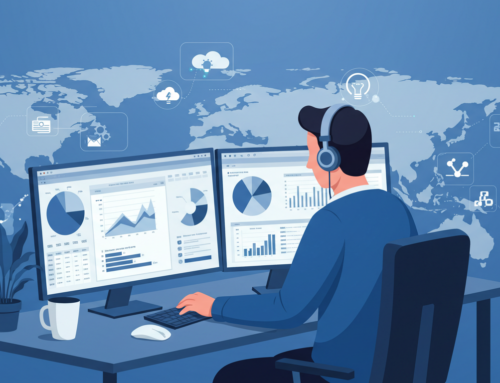Looking for a career that combines the convenience of remote work with the stability of data entry? Well, you’re in luck! We’ve compiled a list of seven remote data entry roles that offer a variety of opportunities for you to explore. From being a virtual assistant to becoming a skilled transcriber, translator, coder, typist, database manager, or researcher, there are plenty of options to suit your interests and skillset. But that’s not all – these roles also provide the flexibility and freedom to work from anywhere, allowing you to take control of your professional journey. So, if you’re ready to discover the possibilities of remote data entry, keep on reading to find out more!
Virtual Assistant
A virtual assistant is a remote data entry role that provides administrative support and performs various tasks for clients remotely. As a virtual assistant, your primary responsibility is to assist clients with their administrative needs from a remote location. This can include tasks such as managing emails, scheduling appointments, making travel arrangements, and conducting research.
One key aspect of being a virtual assistant is providing remote customer support. This involves addressing customer inquiries, resolving issues, and ensuring customer satisfaction. You may be required to respond to emails, answer phone calls, and handle live chat support. It is essential to possess excellent communication skills and a friendly demeanor to effectively assist customers remotely.
In addition to customer support, virtual assistants are often responsible for data entry tasks. This could include inputting information into spreadsheets, updating databases, and organizing files. Attention to detail and accuracy are crucial in performing these tasks to ensure that the data is entered correctly.
Being a virtual assistant offers the flexibility of working from home or any location with an internet connection. It allows you to manage your own schedule and work with clients from various industries. As businesses continue to rely on remote support, the demand for virtual assistants is expected to grow, making it a promising career option for those seeking remote work opportunities.
Transcriber
As a transcriber, you need to possess both speed and accuracy in your work. Being able to type quickly while maintaining a high level of accuracy is essential in this role. Additionally, you should have the necessary skills to transcribe audio or video recordings into written form. Remote transcription tools can aid in this process by providing features such as playback controls, time-stamping, and formatting options to ensure efficient and accurate transcription work.
Speed and Accuracy
When working as a transcriber in a remote data entry role, it is crucial to maintain a high level of speed and accuracy. Data entry techniques play a significant role in achieving this goal. One important technique is touch typing, where you type without looking at the keyboard, allowing you to focus on the content you are transcribing. Additionally, utilizing keyboard shortcuts and auto-correct features can help you save time and minimize errors. However, remote work challenges such as distractions, technical issues, and lack of supervision can impact your speed and accuracy. To overcome these challenges, it is essential to create a dedicated workspace, use reliable equipment and internet connection, and practice regular breaks to stay focused and maintain productivity. By combining effective data entry techniques and addressing remote work challenges, you can excel in your role as a transcriber.
Essential Skills Needed
To excel as a transcriber, it is essential to possess a range of essential skills. Here are the key skills needed for virtual data entry and remote data analysis:
- Technical Skills:
- Proficiency in typing and data entry software.
- Familiarity with transcription tools and software.
- Attention to Detail:
- The ability to accurately transcribe audio files, paying close attention to grammar, punctuation, and spelling.
- Strong proofreading and editing skills to ensure high-quality transcriptions.
- Time Management:
- The ability to meet deadlines and work efficiently to complete assignments promptly.
- Excellent organizational skills to manage multiple transcription projects simultaneously.
Remote Transcription Tools
Remote transcription tools, such as the Transcriber software, are essential for efficiently and accurately transcribing audio files in virtual data entry roles. As a virtual assistant, you will often come across audio recordings that need to be converted into written text. This is where remote transcription tools come in handy. With the help of these tools, you can easily play the audio files and type out the spoken words simultaneously. The Transcriber software, in particular, offers features like playback control, variable speed options, and time-stamping, which enhance your transcription accuracy and productivity. Additionally, it allows you to easily navigate through the audio file, insert timestamps at specific intervals, and even annotate any challenging sections. By leveraging remote transcription tools like Transcriber, you can streamline your transcription process and complete your data entry tasks more efficiently.
Translator
When working as a translator in a remote data entry role, language proficiency is of utmost importance. Not only should you have a strong command of both the source and target languages, but you should also understand the cultural nuances and context behind the text. Additionally, familiarity with translation tools and technology can greatly enhance your efficiency and accuracy in the translation process.
Language Proficiency Requirements
Proficiency in multiple languages is a key requirement for the role of a Translator in remote data entry positions. As a Translator, you will be responsible for accurately translating various documents and data from one language to another. To meet the language proficiency levels required for this role, remote data entry training programs often include language courses and assessments. These programs aim to enhance your language skills and ensure that you can effectively communicate and translate information. The language proficiency requirements may vary depending on the specific job and the languages involved. It is essential to have a strong command of both the source and target languages to accurately convey the meaning and context of the data being translated. Developing and maintaining your language proficiency is crucial for success in this role.
Cultural Nuances and Context
What impact do cultural nuances and context have on the role of a Translator in remote data entry positions? Cultural adaptation plays a crucial role in the effectiveness of a Translator in remote data entry positions. As a Translator, understanding the cultural nuances and context of the data you are working with is essential for accurate and meaningful translation. Cultural differences can greatly affect the interpretation and understanding of data, making it necessary for Translators to be sensitive to these variations. Communication challenges may arise when dealing with cultural differences, such as idiomatic expressions or cultural references that may not have direct equivalents in the target language. Translators must navigate these challenges by adapting their translation approach to ensure accurate and culturally appropriate data entry.
Translation Tools and Technology
Understanding cultural nuances and context is essential for effective translation in remote data entry positions, and translators can further enhance their capabilities by utilizing translation tools and technology. Here are some ways translation tools and technology can support their work:
- Machine Translation: Translation tools such as Google Translate or DeepL can provide instant translations for quick reference, aiding in understanding complex phrases or unfamiliar terminology.
- Translation Memory: These tools store previously translated segments, allowing translators to reuse them, saving time and maintaining consistency.
- *Glossaries and Terminology Databases:* These resources provide translators with industry-specific terminology, ensuring accurate and consistent translations.
- *Spell Checkers and Grammar Checkers:* These tools help catch spelling and grammar errors, minimizing mistakes in the final translations.
Coder
A coder is responsible for writing, testing, and debugging computer programs. In the context of remote coding, coders work from anywhere to develop software and applications. With the increasing demand for data analysis, coders play a crucial role in transforming raw data into meaningful insights. They use programming languages like Python, Java, or C++ to write code that analyzes and manipulates data. This involves writing algorithms, creating functions, and implementing data structures to process large datasets efficiently.
Remote coders often collaborate with data analysts to understand the requirements and objectives of the analysis. They then translate these requirements into code that performs the necessary calculations and generates visual representations of the data. They also ensure the accuracy and reliability of the code through rigorous testing and debugging.
Working remotely as a coder provides flexibility and the ability to work from anywhere in the world. It allows you to collaborate with teams located in different time zones and access global opportunities. However, remote coding requires self-discipline, excellent communication skills, and the ability to manage time effectively. It is essential to stay updated with the latest programming languages, frameworks, and tools to excel in this role.
Typist
As a remote coder, you may find yourself transitioning into the role of a typist, responsible for accurately inputting and formatting data into digital documents. In this role, your keyboard skills will be crucial in ensuring efficiency and accuracy in your work.
As a remote typist, you will need to possess excellent typing skills to quickly and accurately transcribe information. This includes mastering touch typing techniques, where you can type without looking at the keyboard. By doing so, you can minimize errors and enhance your productivity.
To excel as a remote typist, you should also familiarize yourself with various formatting techniques. This could involve using keyboard shortcuts to apply formatting styles, such as bold or italics, to different sections of the document. Additionally, being proficient in using software like Microsoft Word or Google Docs will enable you to efficiently navigate and manipulate documents.
Database Manager
The role of a Database Manager in remote data entry involves overseeing and organizing large sets of data efficiently and accurately. As a Database Manager, your primary responsibility is to ensure the integrity and security of the database. This includes implementing effective data backup and recovery systems, as well as monitoring and controlling access to the database to prevent unauthorized changes or breaches. You will also need to analyze the data to identify trends, patterns, and anomalies that can help drive business decisions and improve operational efficiency. By conducting thorough data analysis, you can provide valuable insights that contribute to the success of the organization. Additionally, as a Database Manager, you may be required to collaborate with other teams or departments to understand their data needs and develop customized reports or dashboards. Your attention to detail and problem-solving skills will be crucial in identifying and resolving any data-related issues or discrepancies. Overall, the role of a Database Manager in remote data entry is vital in maintaining the accuracy, security, and usability of the organization’s data.
Researcher
To be a successful researcher in remote data entry, you need to possess strong analytical skills and be adept at gathering and interpreting relevant information. As a researcher, your role is to support businesses and organizations by conducting thorough investigations and providing valuable insights. Here’s what you need to know:
- Conducting in-depth research: As a researcher, you will be responsible for conducting extensive research on various topics, industries, or markets. This involves using online databases, search engines, and other resources to gather information.
- *Analyzing data*: You will need to analyze the data you collect to identify trends, patterns, and correlations. This will require proficiency in data analysis tools and techniques.
- *Evaluating sources*: It is crucial to evaluate the credibility and reliability of the sources you use for your research. You should be able to discern between reputable and unreliable sources to ensure the accuracy of your findings.
- Providing insightful reports: As a virtual assistant, your research findings should be presented in concise and informative reports. These reports should outline the key findings, recommendations, and actionable insights for the business or organization.
Frequently Asked Questions
What Are the Common Qualifications or Skills Required for a Remote Data Entry Role as a Virtual Assistant?
To succeed in a remote data entry role as a virtual assistant, you’ll need skills in accurate data entry, attention to detail, time management, and proficiency in relevant software programs. Remote work opportunities offer flexibility and convenience.
Are There Any Specific Software or Tools That Are Commonly Used in Remote Data Entry Roles as a Transcriber?
As a transcriber in remote data entry roles, you’ll commonly use software and tools like transcription software, text editors, and keyboard shortcuts to efficiently transcribe audio or video files.
What Are the Primary Languages or Language Pairs That Are in High Demand for Remote Data Entry Roles as a Translator?
If you’re considering remote data entry roles as a translator, it’s important to know that language pairs like English-Spanish, English-French, and English-German are in high demand.
Can You Provide Some Examples of Coding Languages or Programming Skills That Are Commonly Required for Remote Data Entry Roles as a Coder?
You’ll commonly need coding languages like Python and programming skills like SQL for remote data entry roles as a coder. These skills allow you to efficiently manage and manipulate data for various tasks.
Are There Any Specific Typing Speed or Accuracy Requirements for Remote Data Entry Roles as a Typist?
If you’re considering remote data entry roles, you may wonder about typing speed and accuracy requirements. Generally, employers look for a fast and accurate typist. Specific software and tools will vary depending on the role.
Conclusion
As you conclude your search for remote data entry roles, envision yourself seamlessly navigating through a virtual world, effortlessly organizing information and contributing to projects from the comfort of your own space. With opportunities ranging from being a virtual assistant to a skilled coder or a meticulous researcher, the possibilities are endless. So, step into the realm of remote data entry and let your skills soar as you embark on this digital journey of productivity and innovation.




